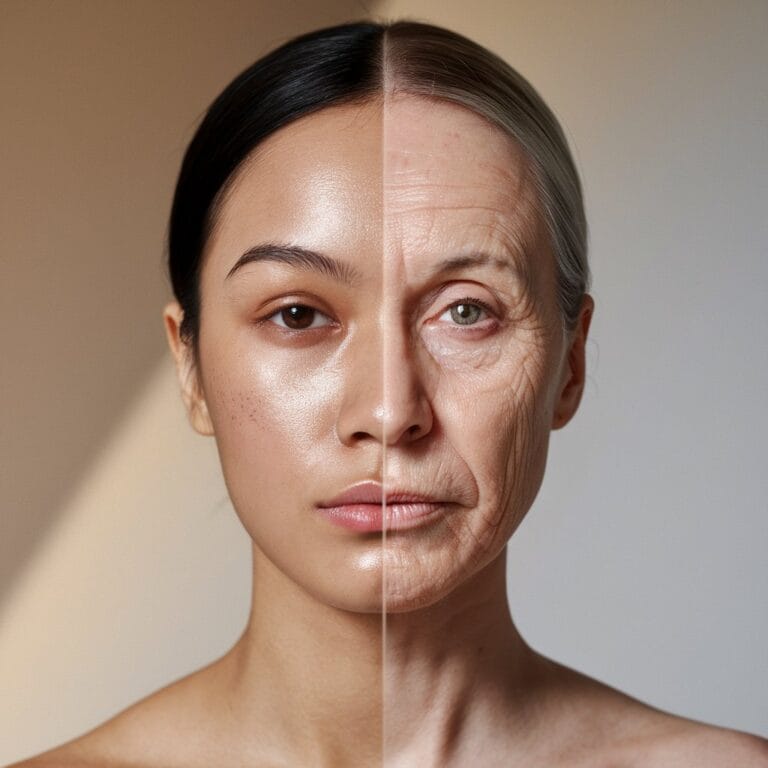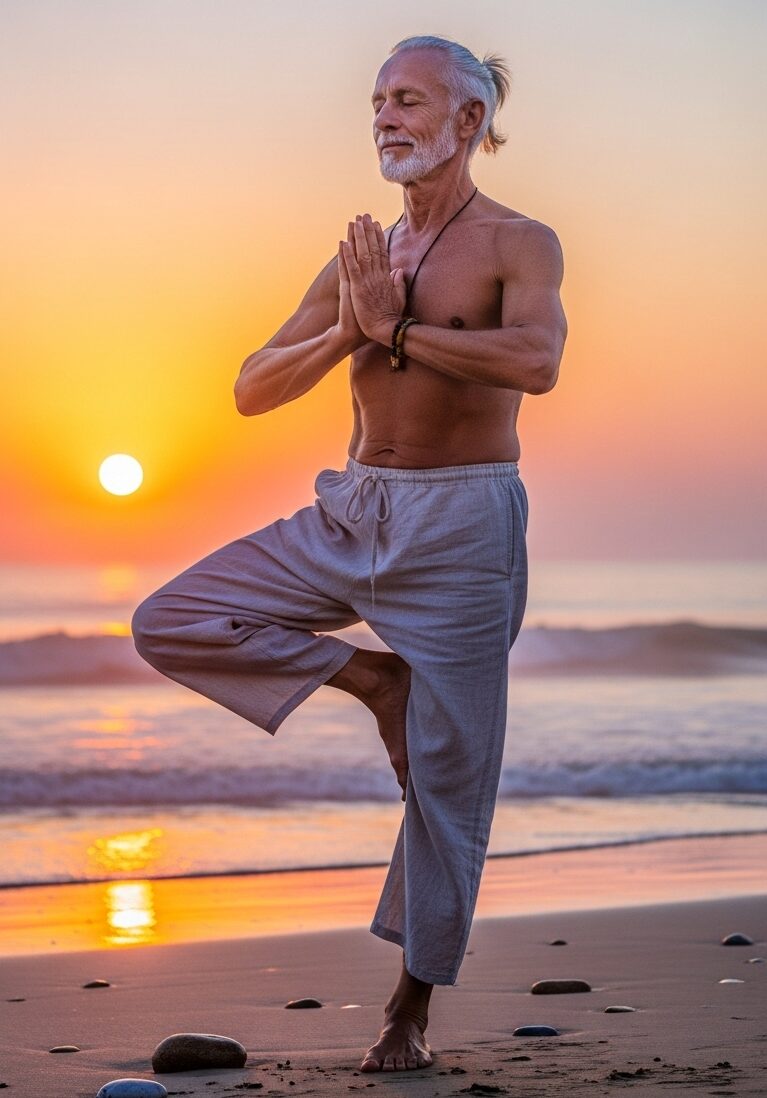FREE SHIPPING OVER $50
Sitting Too Much? This One Move Reverses the Damage and Slows Aging, Say Experts

For many of us, modern life is synonymous with sitting. We sit in the car, sit at the desk, and sit on the couch. While it seems harmless, experts say that this prolonged state of stillness—or “sitting disease”—is one of the biggest yet quietest threats to our fitness and longevity. When we are sitting too much, our hips tighten, our glutes turn off, and our posture collapses, effectively accelerating aging by contributing to chronic pain, metabolic slowdown, and poor blood flow.
The problem feels enormous, but the solution doesn’t have to be complex. You don’t need a massive hour-long workout to undo the damage. According to fitness and geriatric experts, there is one move so powerful and so fundamental that it can actively reverse the damage caused by hours of sitting. This simple exercise re-engages your powerhouse muscles, improves spinal mobility, and instantly boosts blood circulation, making it the ultimate hack for anyone looking to slow aging and reclaim their functional fitness.
The Glute Bridge: The Single Most Important Move for Desk Workers
The Glute Bridge is deceptively simple, yet it directly targets the most damaged muscle groups caused by prolonged sitting: the hip flexors and the glutes.
When you sit for hours on end, your hip flexors (muscles at the front of your hips) remain in a perpetually shortened position. Over time, they become tight and restricted, pulling down on your pelvis and causing that telltale lower back pain. Conversely, your glutes (the powerful muscles in your backside) remain inactive, leading to “gluteal amnesia”—they literally forget how to fire. This muscle imbalance is the primary driver of poor posture, knee pain, and, ultimately, reduced longevity.
The Glute Bridge is the perfect antidote. It forces a complete extension of the hips, gently stretching the tight hip flexors while simultaneously requiring the glutes to contract powerfully. This dual action not only relieves tension but also reactivates your body’s largest and most metabolically active muscle group, directly addressing the core physiological damage of sitting too much and helping you reverse the damage with immediate effect.
How The Glute Bridge Reverses Damage and Slows Aging
Experts say the power of this one move lies in its holistic impact on the body’s essential systems, helping to counteract the major ways chronic sitting accelerates aging.
1. Fires Up the Gluteal Engine (Metabolic Boost)
The glutes are the body’s powerhouse. Strong glutes are essential for a healthy metabolism because muscle tissue burns more calories at rest than fat tissue. By regularly performing the Glute Bridge, you wake up this large muscle group, boosting your overall metabolic rate. This is key to longevity, as a healthy metabolism is strongly linked to sustained energy and effective weight management. This is a free, no-supplements needed way to become a more efficient fat-burning machine.
2. Decompresses the Spine and Relieves Back Pain
The constant pressure of sitting too much compresses the discs in your lower back. The Glute Bridge gently takes the spine into extension, creating space and momentarily relieving that compression. Furthermore, strengthening the glutes and core provides better support for the lumbar spine, correcting the pelvic tilt that often causes chronic lower back pain. This decompression is a crucial step in reversing the damage of a desk-bound lifestyle.
3. Improves Circulation and Reduces Inflammation
Inactivity slows blood flow, especially to the lower extremities, which contributes to systemic inflammation—a core component of accelerated aging. The rhythmic contraction and relaxation of the large leg and glute muscles during the bridge act as a pump, forcefully driving blood back toward the heart. This immediate boost in circulation helps reduce fluid retention, delivers fresh oxygen and nutrients to tissues, and actively works to slow aging at the cellular level.
Mastering the Move: The Perfect Glute Bridge
To get the most fitness and anti-aging benefit from this one move, proper form is essential. Remember, quality always trumps quantity.
Step-by-Step Execution
- Starting Position: Lie on your back on the floor or a yoga mat. Bend your knees so your feet are flat on the floor, hip-width apart. Your heels should be close enough that you can lightly brush them with your fingertips. Keep your arms relaxed at your sides.
- The Engage: Before lifting, push your lower back slightly into the floor and brace your core (like you’re preparing for a punch). This ensures your abs engage and your lower back is protected.
- The Lift: Exhale and push through your heels to lift your hips off the floor. Do not arch your lower back. The movement should come entirely from your glutes and hamstrings.
- The Peak: At the top, ensure your body forms a straight line from your shoulders to your knees. Squeeze your glutes as hard as possible. This is the crucial moment for hip flexor release and glute activation.
- The Return: Inhale and slowly lower your hips back down to the floor with control. Avoid collapsing or resting fully on the floor before the next repetition.
Progressive Resistance for Longevity
Once you can comfortably perform 3 sets of 15 repetitions with perfect form, it’s time to increase the challenge to keep rebuilding muscle and reversing aging:
- Single-Leg Bridge: Perform the bridge with one foot lifted slightly off the floor. This instantly doubles the load on the working glute, forcing greater strength and stability.
- Tempo Bridge: Slow down the lifting (3 seconds up) and lowering (3 seconds down) phases to increase the time under tension, which is a major driver of muscle growth and metabolic boost.
- Hold at the Top: Hold the peak contraction for 10-20 seconds to maximize glute activation and endurance.
Integrating The Bridge into Your Day (The Anti-Sitting Hack)
The true power of this one move lies in its ability to be integrated into your day as a preventative hack, minimizing the damage as it occurs. Experts say that short, frequent bouts of activity are often better than one long, intense session for combating the effects of chronic sitting.
The “Hour Rule”
Every hour you spend sitting too much, stand up and perform a short set of Glute Bridges (10 to 15 reps) or simply do a set of deep squats. This brief, targeted movement is enough to wake up the glutes, lengthen the hip flexors, and reset your posture, preventing the deep structural damage from setting in. Making this a daily, non-negotiable ritual is the secret to sustained longevity and fitness.
By making the Glute Bridge your go-to defense against the modern epidemic of sitting, you are taking proactive, powerful steps to reverse the damage to your spine, boost your metabolism, and significantly slow aging. This is the ultimate example of functional fitness—simple movements that deliver profound wellness benefits for life.
Conclusion
The warning from experts is clear: sitting too much actively works against your longevity goals. However, the good news is that the fix is simple, accessible, and incredibly effective. The Glute Bridge is the one move that provides the perfect counter-force, actively reversing the damage by strengthening your glutes, relieving back pain, and resetting your posture.
You hold the power to change your physical trajectory. Commit to integrating the Glute Bridge into your daily routine. By embracing this fundamental exercise, you prioritize functional fitness, protect your joints, and significantly slow aging—proving that the secret to long-term wellness isn’t found in expensive supplements, but in the conscious, consistent movement of your body.
Related Articles
- Over 60? These 3 Exercises Rebuild Strength, Boost Energy, and Keep You Feeling Young
- Why Some Athletes Peak After 40—Neuroscience Reveals the Brain Advantage
- If You’re Over 45 and Can’t Pass These 4 Strength Tests, Your Mobility May Be at Risk
- Over 40? Trainers Say These 6 Exercises Are Non-Negotiable for Strength and Longevity
- This Forgotten Bicep Trick From the Golden Era Builds Sleeve-Splitting Arms Fast



